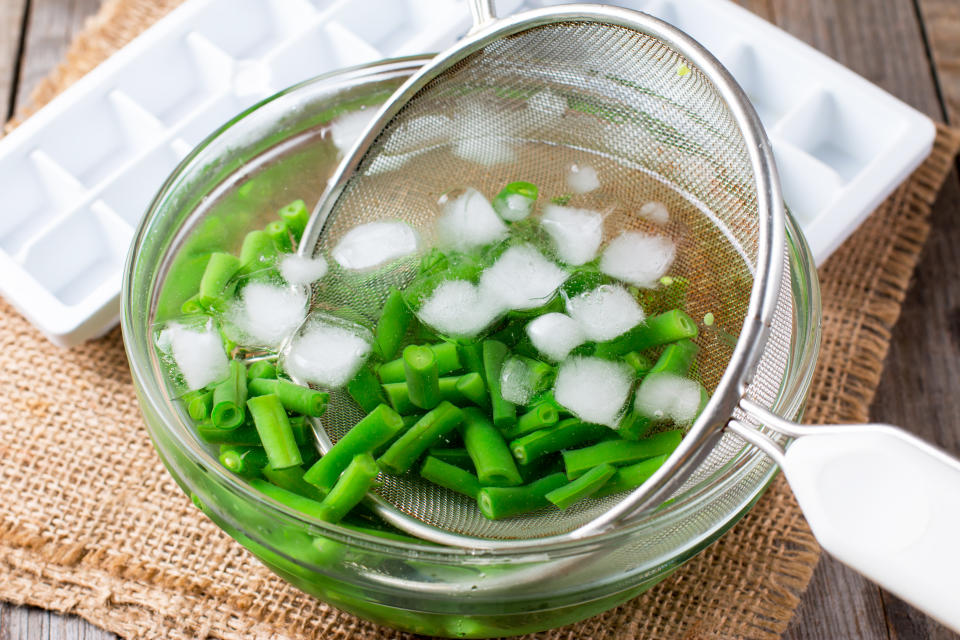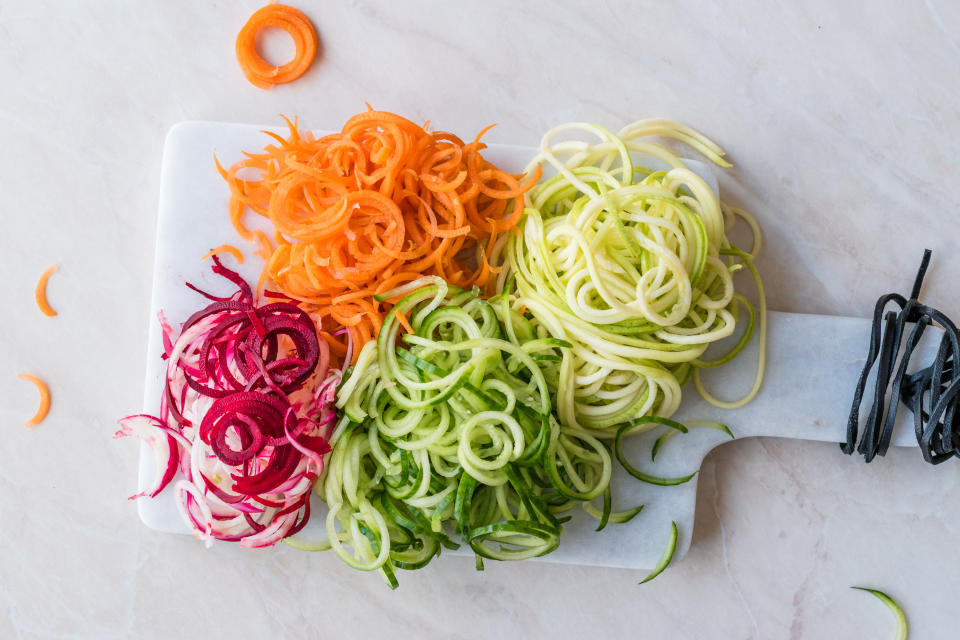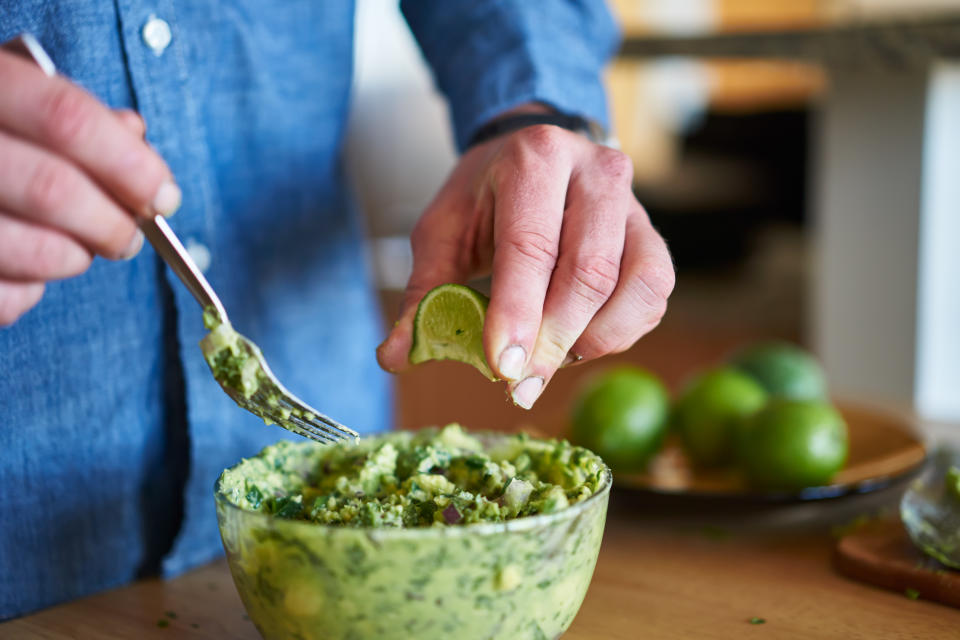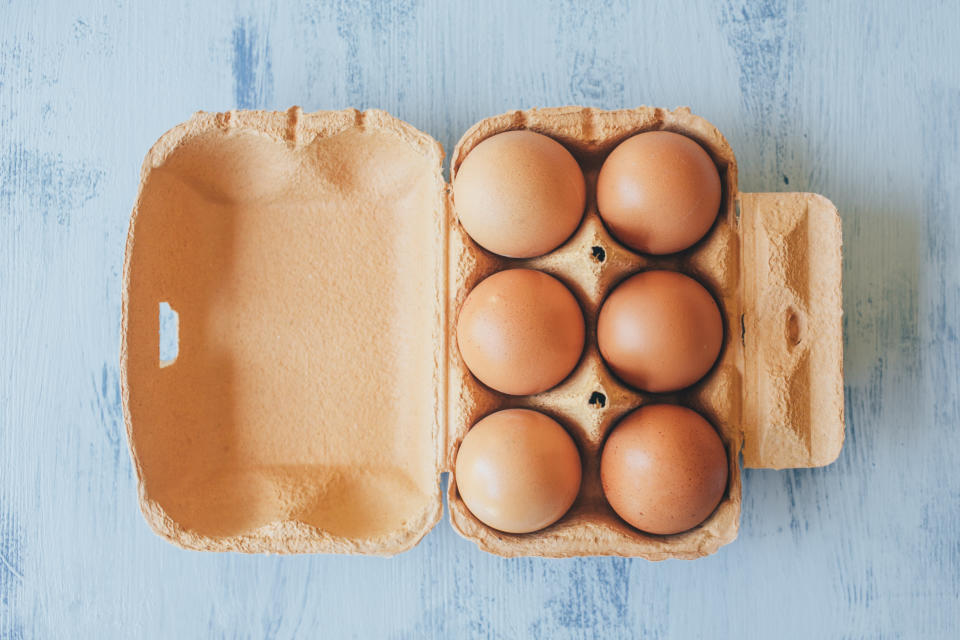Extend the life of your produce with these easy tricks
While finding a can of beans and a box of pasta at your grocery store right now is as rare as a unicorn sighting, the produce aisles at your local markets are brimming with fresh, delicious produce. But how can you extend the life of your perishables? Studies show the search query ‘freezing food’ has been googled 220% more often this year compared to 2019.
The good news is that, technically, food stored in the freezer should be safe to eat indefinitely. “Freezing food is a great way to help your food last longer because when food is at freezer temperatures, 0°F or below, bacteria can't grow on it,” explains Janilyn Hutchings, Certified Professional in Food Safety. However, the longer food stays frozen, the more its quality tends to decrease and its texture tends to change.
The prep is crucial though with regards to viral concerns. “If you are concerned that a food is contaminated, freezing will not kill it,” explains Tania Elliott, MD, “it will just make the virus or bacteria dormant.” Consider washing thoroughly and allowing produce to sit for 48 hours. Make sure you cook foods thoroughly before eating regardless of the amount of time it has spent in the freezer, she adds.
It’s a lot to think about, but don't worry, we’re going to take you through how to freeze your produce like a pro.
Freeze produce like the pros

Avoid dreaded freezer burn by first blanching your produce! This is the process produce packagers use to extend the life of your freezer stash while helping to enhance flavors and vitamins. “Blanching helps get a good quality product and prevents spoilage, flavor changes, and color changes,” explains certified nutritionist Melissa Morris.
Blanching is effective because it cleans fruits and vegetables and deactivates the enzymes that signal the food to start the rotting process. So your food will taste fresher, longer.
Simply place your produce in a pot with hot water and a steamer basket. When the timer goes off, toss them in an ice-water bath for a minute or so until they are cooled thoroughly, then drain. Next, you’ll want to freeze each floret or piece individually so you can prevent freezer burn and preserve nutrients and flavor, this is called flash freezing! Finally, transfer veggies to a storage bag.
Your vibrant green cruciferous vegetables are now ready for stir-fries, soups, your Airfryer and more!
If you don’t have a steamer basket roll up aluminum foil into balls and put in the bottom of the pot and place a heat-proof plate on top.
How to freeze water-y produce

You’ve seen this happen in real-time, you defrost produce and it weeps liquid. That’s because when fruits and vegetables with a lot of water are frozen, the water turns into ice crystals which damage cell membranes, making them weep.
For water-logged veggies like zucchini, squash and bell peppers, spiral and freeze for a quick “veggie spaghetti” stir fry. Drain your veggies once you remove them from the freezer by popping them in the salad spinner to get rid of excess water.
For tomatoes that you can use in sauces and soups, slice, freeze and layer in a freezer bag, they can last up to nine months.
As we move into summer, consider blending fruit, too – like watermelon! Freeze it in ice cube trays for quick smoothies and popsicles.
How to store produce that ripens very quickly

Some of the fruits and vegetables you’ve purchased have a very short lifespan – we’re talking three to five days in some instances, so how can you extend it? Here’s how to freeze produce that ripens very quickly like avocados, bananas and more.
Bananas are the first fruits to go, right? When freezing bananas, peel them ahead of and pop them into an airtight container. Kate Lacroix founder of STOCKED recommends using them for breads, smoothies and as an egg substitute.
As far as avocados, you have a few options, but cracking them open, scooping them out and mashing are critical – never freeze a whole avocado. Consider blending avocados into a salad dressing with a little olive oil and some spices, transfer to a jar and freeze.
Guess what? You can also freeze guacamole! “When making your guacamole, adding an acid like lime or lemon juice helps prevent your avocados from browning but you can also add an unflavored vitamin C tablet to your guacamole to prevent browning,” explains Michele Sidorenkov, RDN. Defrost in the refrigerator and enjoy!
Berries are trickier than you think! “Because there is so much water in fruit, you need to make sure you are not creating a solid block of frozen fruit that you’ll need an icepick to break apart later,” jokes Darnell Cox, certified nutrition and health coach. The trick is in removing as much moisture as possible.
Clean berries by soaking them in water and allowing them to get bone dry in a colander overnight. They are now ready for freezer bags. Make sure to remove all stems, so your fruit is ready for the blender or pot.
How to store delicate greens

We’ve all been there, you pick up greens and they start to spoil before you’ve had a chance to enjoy them! So what can you do? The toughest produce to freeze is delicate dark leafy greens like kale, arugula and spinach, but here’s how what to do so you can enjoy them for months to come.
First, pick through leaves and discard any that already look past their prime. A few slimy leaves will accelerate spoilage. Wash well and take greens for a spin in a salad spinner.
This next step is crucial; allow the leaves to dry fully overnight on a baking sheet before freezing. Doing so will ensure leaves don’t stick together and you don’t get freezer burn.
Once frozen, store in an airtight container to avoid crystallization. “Air is the enemy of the freezer so just taking an extra moment to press it out will dramatically improve the quality of your frozen produce,” explains Ali Rosen, host of Emmy-nominated show Potluck with Ali Rosen.
How to freeze what you thought was unfreezable

Can you really freeze cheese, milk and eggs? The answer is yes… but there are some tricks you need to know first!
To freeze whole eggs, crack them into a bowl, beat lightly and pour it into a muffin tin or a silicone muffin mold. You can whisk one or two eggs for each reservoir, or even separate yolks and whites – just think about how you’d best utilize and store accordingly. Once frozen, rest the tin in a warm water bath to release, then just place egg rounds in a resealable container.
Skim and low-fat milks freeze the best, the less fat, the less separation you’ll have!
Remove enough milk from your container to get at least two-inches of headspace in the container. Like water, milk expands when it freezes, so this step is crucial to avoid a big mess.
Pop your plastic jug right into the freezer, don’t transfer to a glass container because it could shatter! Once de-thawed, give it a shake! You can use this milk for cooking, baking, even your morning oatmeal and smoothies.
Harder cheeses are best for freezing, that’s because the more water, the more food crystallizes in the ice box and that damage really messes with the food’s texture. Look to store parmesan and other hard cheeses. First, cut cheese into 2-3 inch pieces, then double wrap each in parchment paper. Now it’s ready for the freezer.
And finally, it really couldn’t be easier to store breads – just pop the entire cut loaf into the freezer! It can be brought back to life by microwaving 15-25 seconds and the texture and taste stay truer than if stored in the fridge.
Video by Kat Vasquez
Read more from Yahoo Life
Former monk Jay Shetty reveals 4 ways to change your life right now
I turned 40 on lockdown in New York City during the coronavirus pandemic, then my cat died
What one woman has learned about being estranged from her family during the coronavirus pandemic
Want daily wellness, lifestyle and parenting news delivered to your inbox? Sign up here for Yahoo Life’s newsletter.

